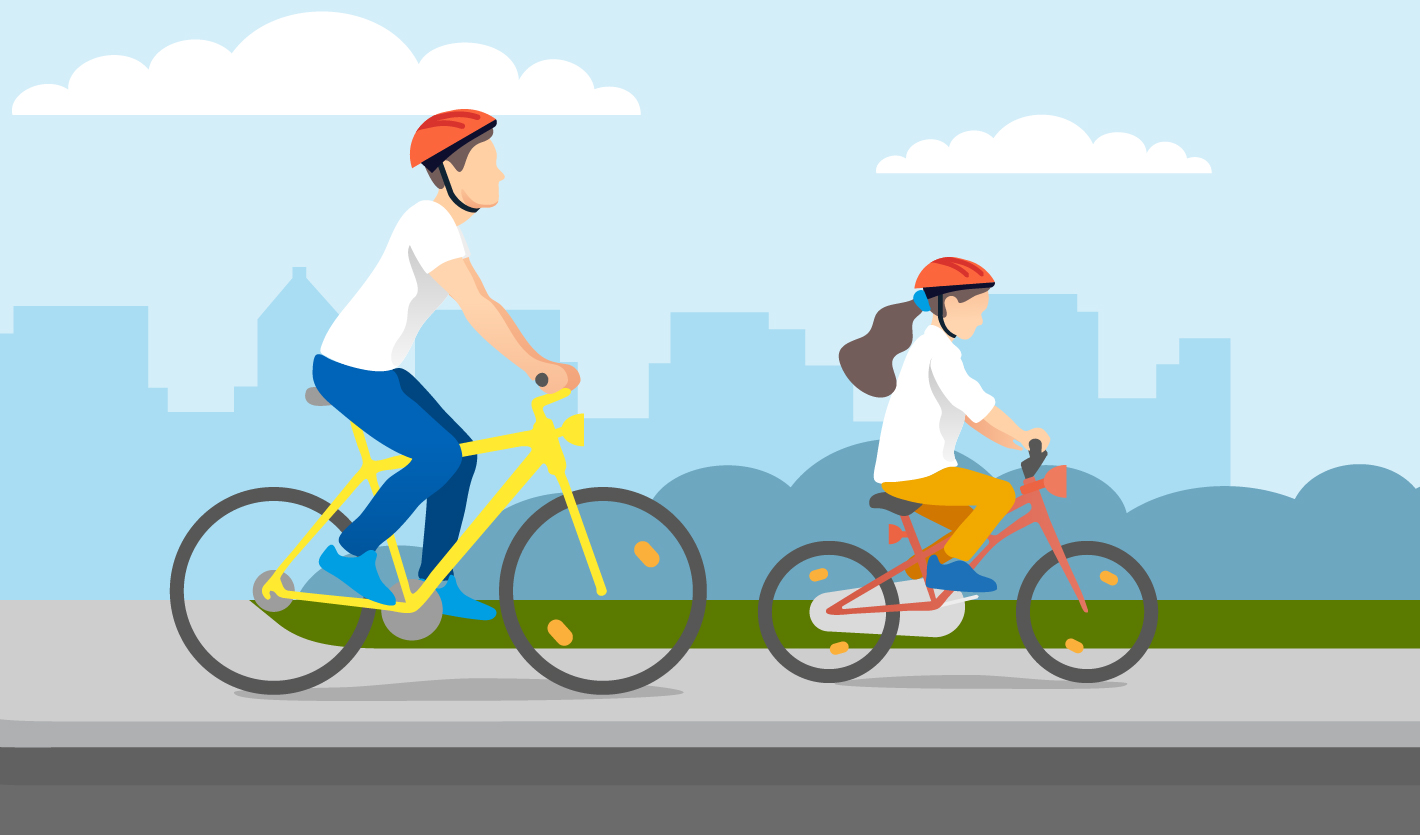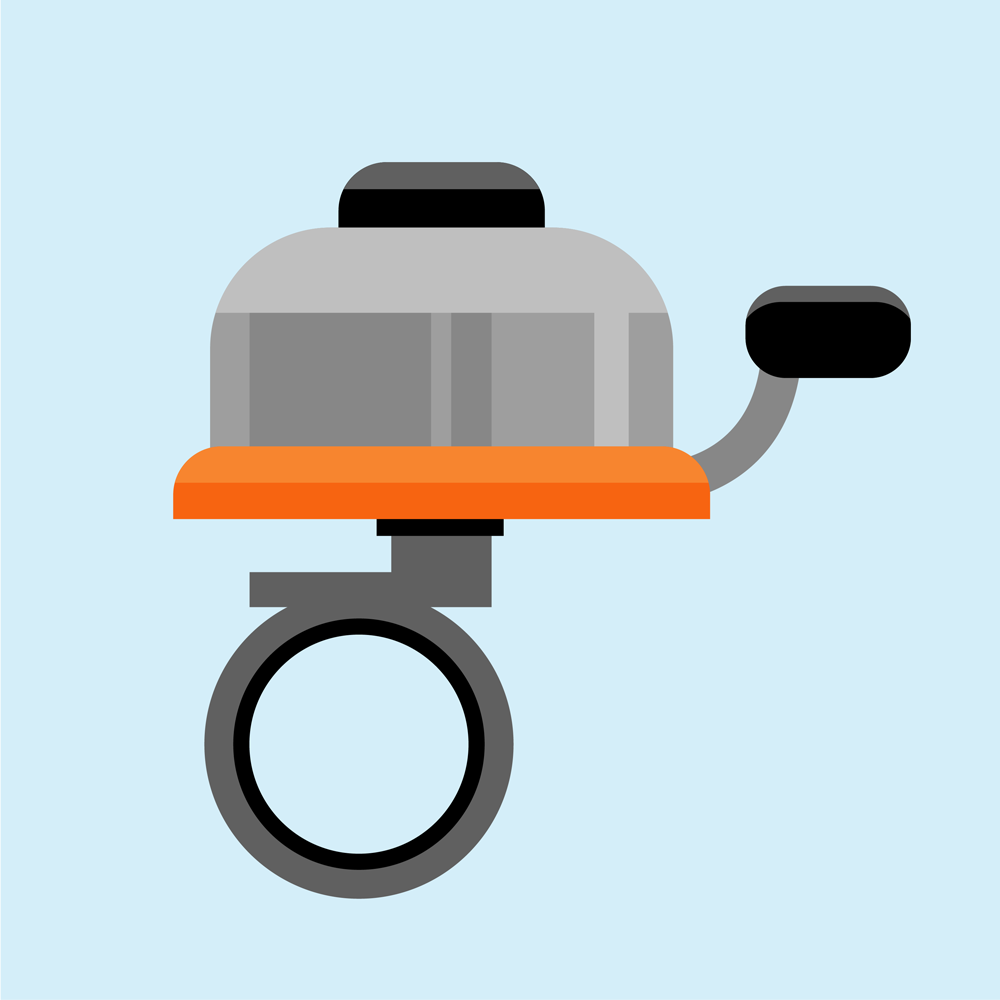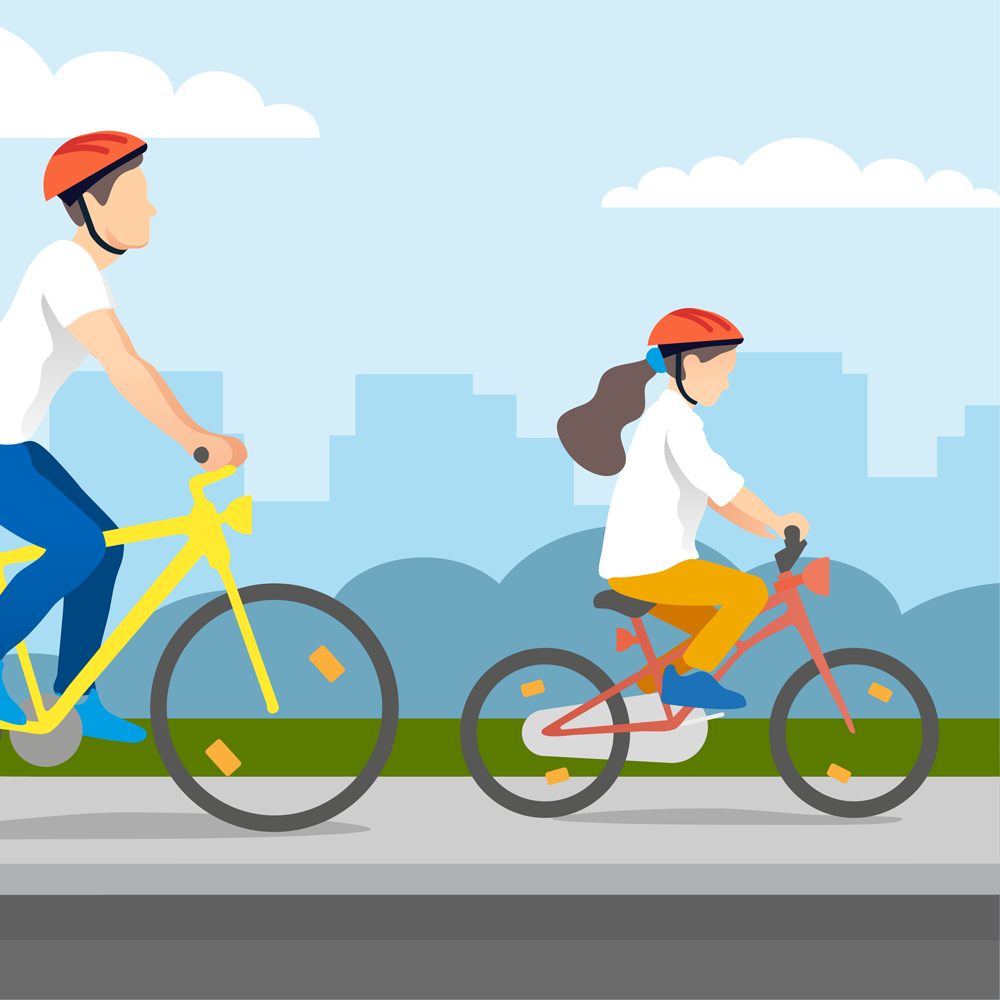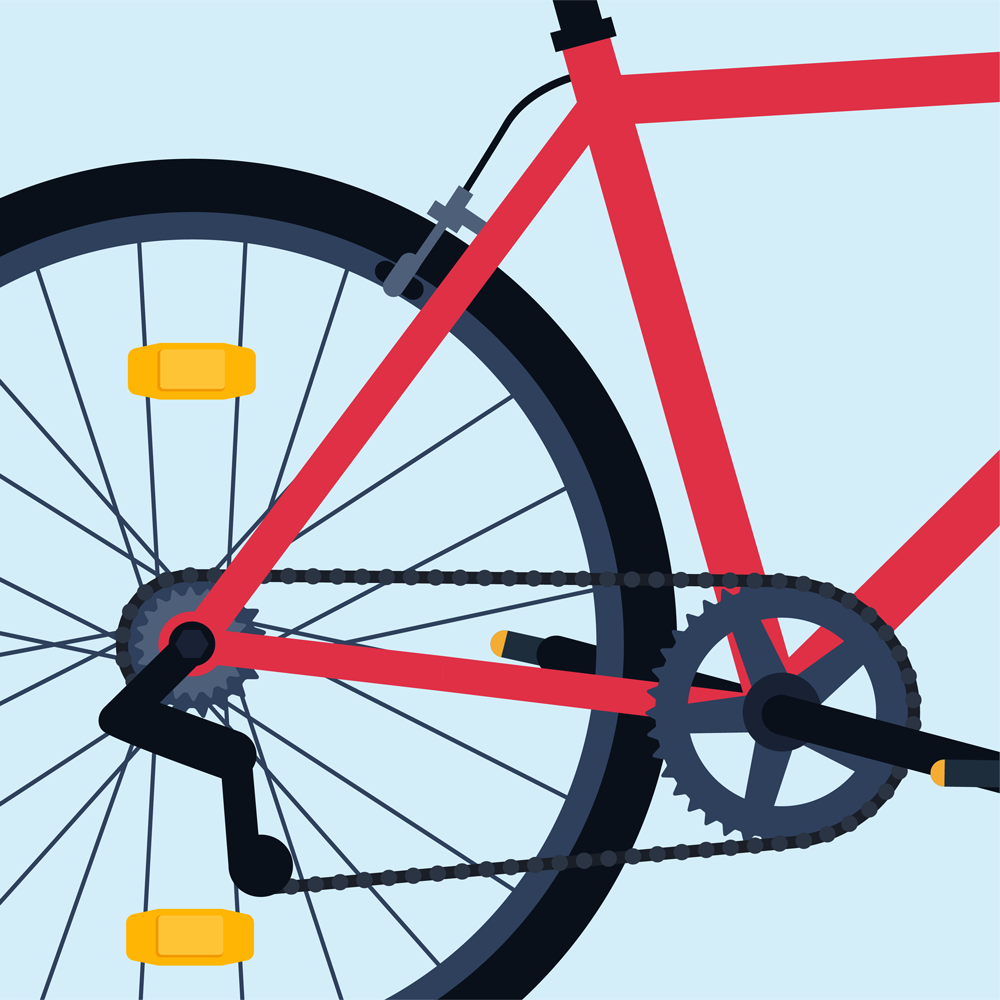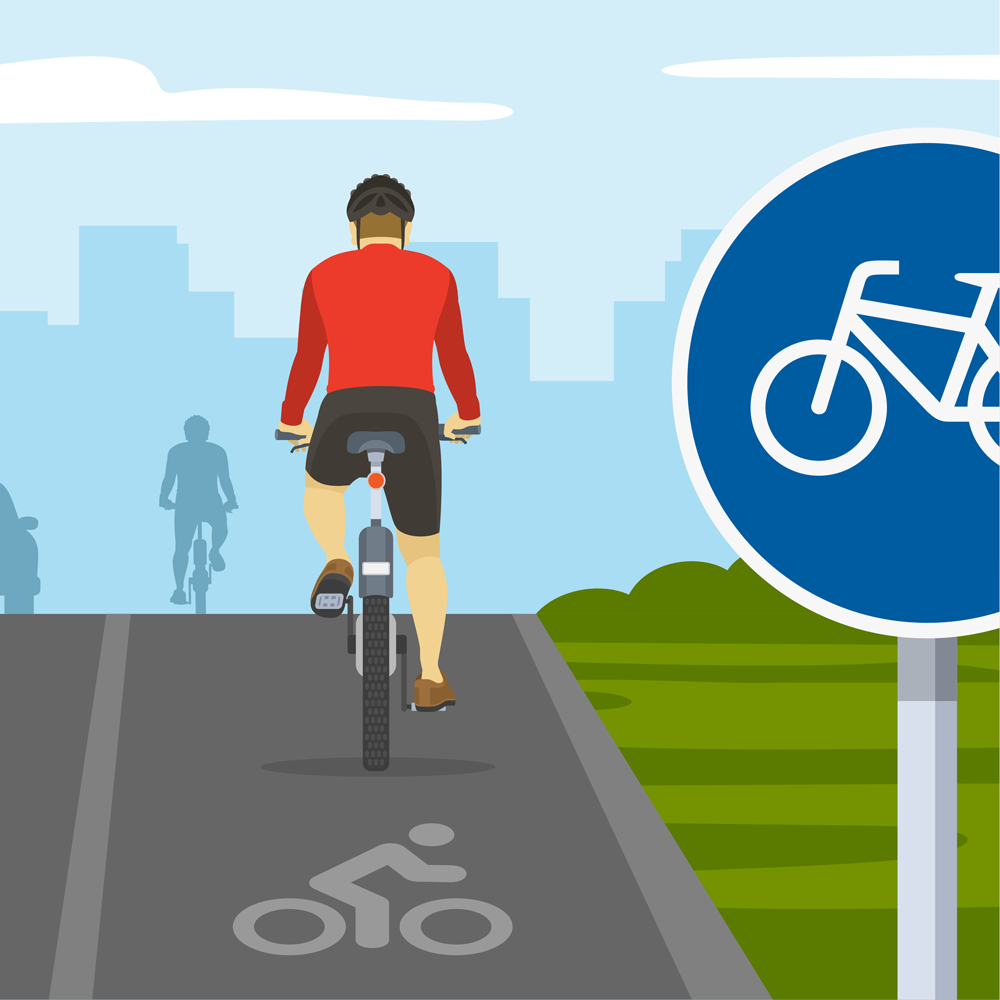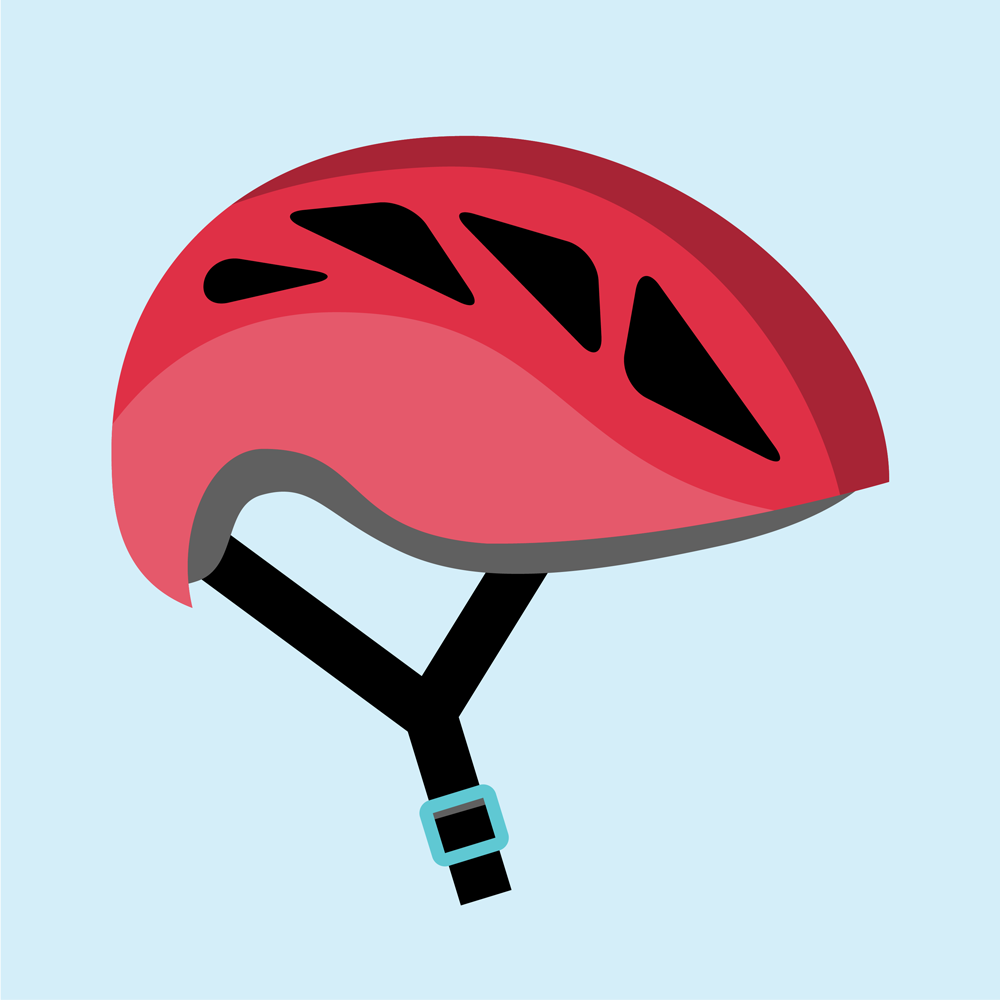Riding on the pavement, using the cycle path or not, ringing the bell or not, with a helmet or without – there are heated discussions about cycling. But the crucial question often falls by the wayside: What is the safest way for parents and children to get through traffic? MobileKids explains what's important.
1. Ring the bell for safety
Especially on paths shared by pedestrians and cyclists, the bell on the bike is an important means of drawing attention to yourself before overtaking. In Germany, ringing the bell is even mandatory if there is a danger to others when overtaking. However, if pedestrians leave enough space, many cyclists don’t ring the bell – for fear of frightening someone. Just like the car horn, the bicycle bell should primarily be used as a warning. In Japan, ringing the bell when overtaking is therefore strictly forbidden. But even passing quietly harbours risks, as pedestrians can still be startled and react unpredictably.
So what now, Moki? Ringing the bell is not only a question of safety, but also of politeness. MobileKids therefore recommends ringing the bell in good time – preferably a few metres before the overtaking manoeuvre. This gives pedestrians enough time to look around and make way in a relaxed manner.
2. Can you cycle on the pavement?
Can or should you ride on the pavement if the road seems unsafe? Or is this only allowed for children, while adults always have to be on the road? The following applies in Germany: Children up to the age of ten are allowed to ride on the pavement – up to the age of eight, it is even compulsory. An accompanying person may follow on their bike. Similar rules exist in many countries – albeit with different age limits. In South Korea, senior citizens as well as children are allowed to ride on the pavement, while in Australia almost all states generally permit this. The United Kingdom, on the other hand, officially bans cycling on the pavement – but there are no penalties for children. Despite this, a police officer in Lincolnshire took a four-year-old girl's bike from her on the pavement in 2015 – even though this was not permitted.
So what now, Moki? As long as it is mandatory, children must ride on the pavement. But there are critical situations there too. In the early stages, parents should either stay close to the cyclist on the carriageway or – if permitted – ride with the child on the pavement. The transition to the road requires safe cycling skills and intensive preparation. In Germany, cycle training in the third or fourth year of school is a good time to start.
3. More safety thanks to better equipment
A roadworthy bicycle in Germany must be equipped with two independent brakes, a bell, a white light and reflector at the front, a red light and reflector at the rear, two yellow spoke reflectors or reflective material on each wheel, and non-slip pedals with yellow reflectors. Similar regulations exist in many countries, but there are differences. In Australia and Poland, for example, one brake is sufficient.
So what now, Moki? These regulations are minimum standards. If you want to do more for safety, you can also wear bright clothing, a high-visibility vest or a helmet light to make yourself more visible.
4. Cycle lane or cycle path – which is safer?
Structurally separated cycle paths often convey a greater sense of safety, but are considered more dangerous at junctions. The reason: Drivers are less aware of cyclists, which means that conflicts occur more frequently at junctions and crossroads. On cycle lanes that run directly on the carriageway, mutual awareness is higher – but many cyclists feel less protected there. Because structurally separated cycle paths are used more frequently, accidents also occur more often there. Overall, the difference is so small that experts do not give either of these options a clear preference. The Dutch infrastructure is a role model: There, junctions are designed with islands at the corners to ensure clear separation and better visibility.
So what now, Moki? Structurally separated cycle paths are generally safer – until the next junction. Special care is required there. Of course, independent cycle lanes and cycle highways like those in Copenhagen or Amsterdam are best.
5. With or without a helmet?
In Australia, helmets are compulsory for all cyclists, in Spain only outside built-up areas. Countries such as Israel, Austria, Sweden and South Korea only require helmets for children. In most Central European countries – including Germany – wearing a helmet is voluntary. Helmets can prevent injuries as they absorb up to 87 percent of the impact energy. However, studies show that good cycle paths, safe traffic lights and cycle-friendly traffic planning have an even greater influence on the number of head injuries. The helmet requirement alone does not automatically make cycling safer.
So what now, Moki? The best solution is a combination of everything: Wear a helmet, ride with foresight and use routes with a good cycling infrastructure wherever possible.


